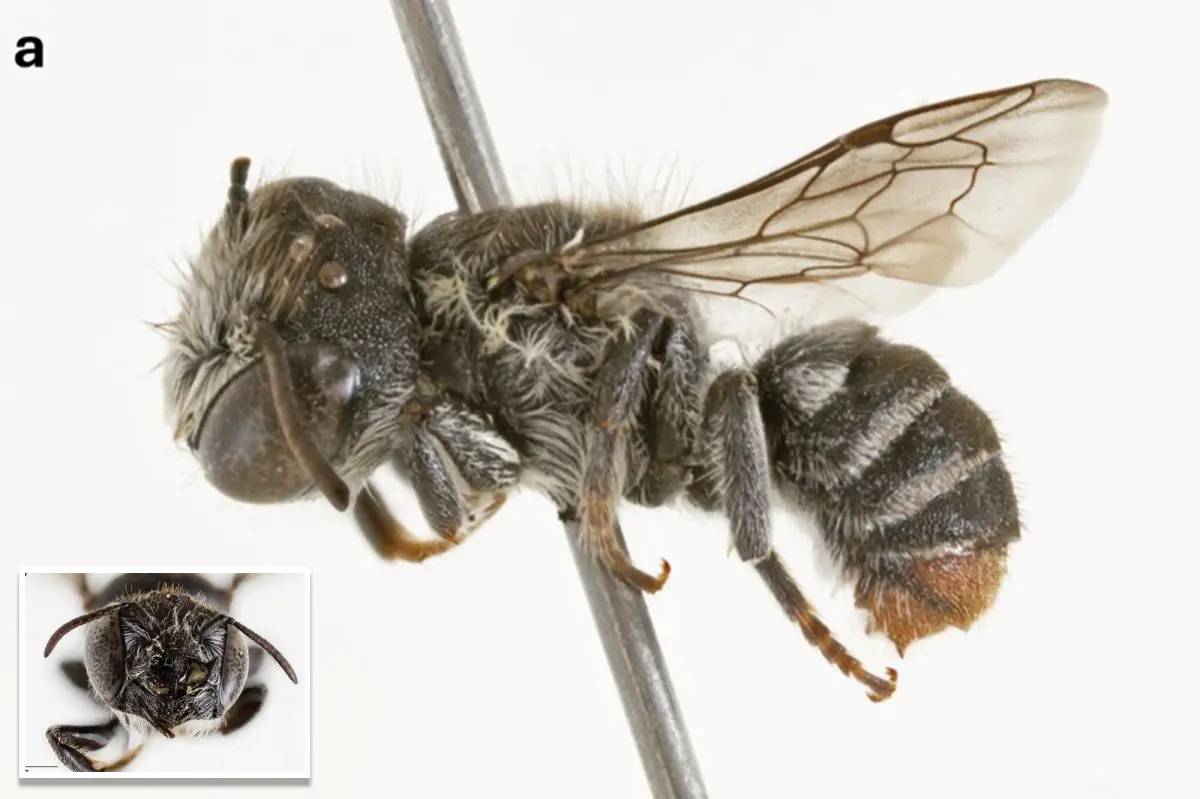Copyright New York Post

The devil is in the tiny details. A team of scientists discovered a new bee species they affectionately nicknamed “Lucifer” after noticing that its female cohort sports a set of devil-like horns. Kit Prendergast, the lead author of the study published in the “Journal of Hymenoptera” on Nov. 10, wrote in a statement that she helped dream up the name while watching the award-winning Netflix show “Lucifer.” “The name just fit perfectly. I am also a huge fan of the Netflix character Lucifer so it was a no-brainer,” Prendergast said in a statement. They dubbed the new species the Megachile lucifer. The group stumbled across it in 2019 while surveying a critically endangered wildflower in Western Australia’s Goldfields, according to the study. The species’ female bees feature “highly distinctive” horns that point upwards, like many modern-day interpretations of the fallen angel Lucifer, who many Christians believe betrayed God by leading the first humans to the fruit of knowledge. The horns measure about 0.9 millimeters long and can be used to access flowers, defend hives and compete for much-needed resources, according to the study. The species’ male bees, though, lack the horns. The exact effect this may have on their function or place in the colonies, if any, is still unclear. Scientists later discovered that the newly discovered species didn’t actually match a single known bee in existing databases, making it the first new member to be described in more than 20 years. Predergast asserted that their discovery only highlights the importance of studying native species, particularly bees, in areas that may be particularly vulnerable to habitat disturbance or climate change. She said that the Goldfields in particular are “at risk of mining.” “Many mining companies still don’t survey for native bees, so we may be missing undescribed species, including those that play crucial roles in supporting threatened plants and ecosystems,” Prendergast said. “Without knowing which native bees exist and what plants they depend on, we risk losing both before we even realize they’re there,” she added. Australia is home to roughly 2,000 native bee species, though more than 300 still haven’t been scientifically named or described, according to Australia’s Commonwealth Scientific and Industrial Research Organisation. In August, a deadly honey bee parasite was detected in hives in Oz. Gippsland Apiarist Association president Stan Glowacki said that once a parasite weaseled its way into a beehive, it could multiply rapidly and kill off the entire colony within six to nine months. It’s unclear how many hives were destroyed by the mites. In early 2020, a devastating brushfire tore through a sanctuary for rare bees on Australia’s Kangaroo Island. Nearly 600 hives of Ligurian bees, a nearly extinct species originally native to Italy, were destroyed. The sanctuary was believed to host the world’s last genetically pure population of Ligurian bees. The species is also vulnerable to the same honey bee parasites reported over the summer.



